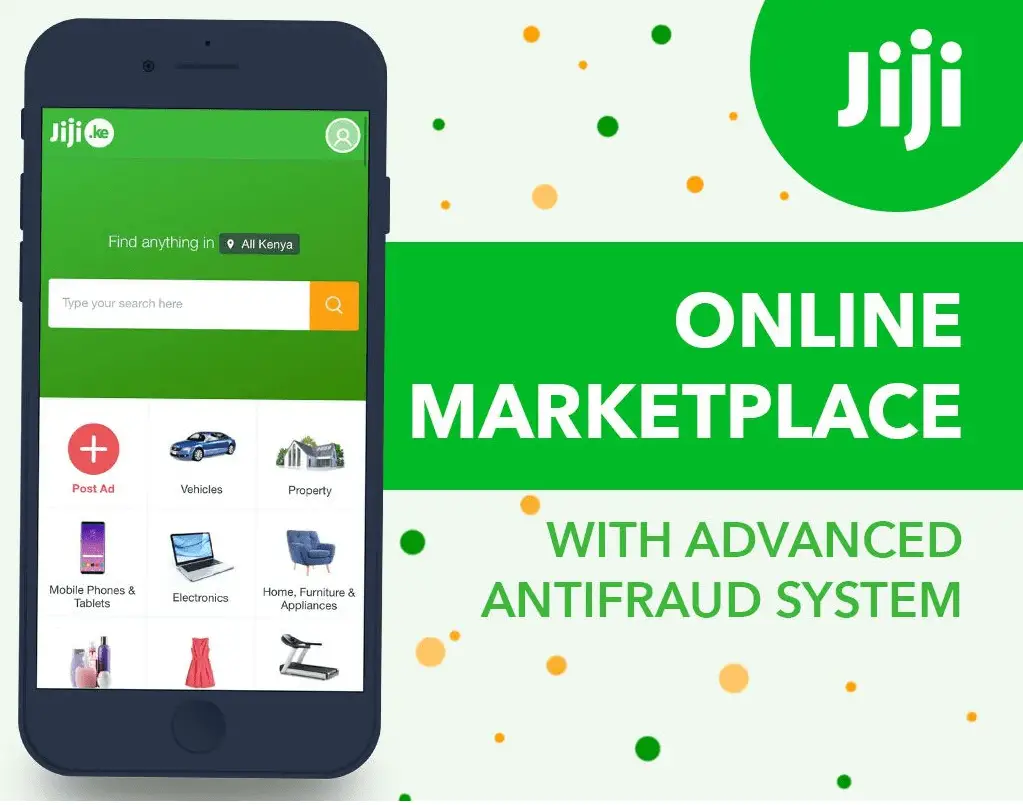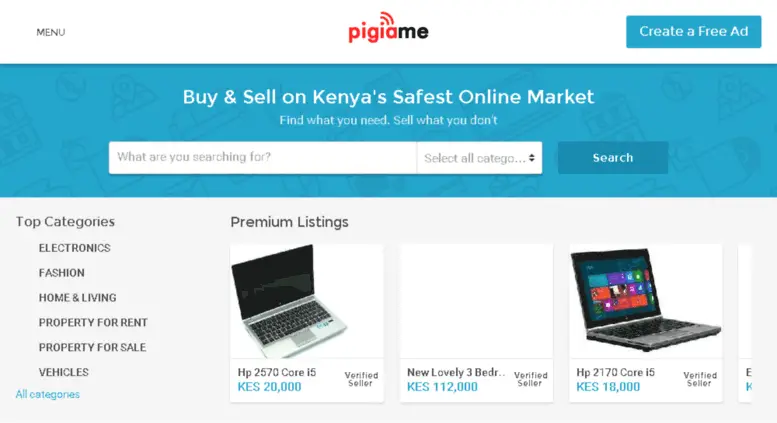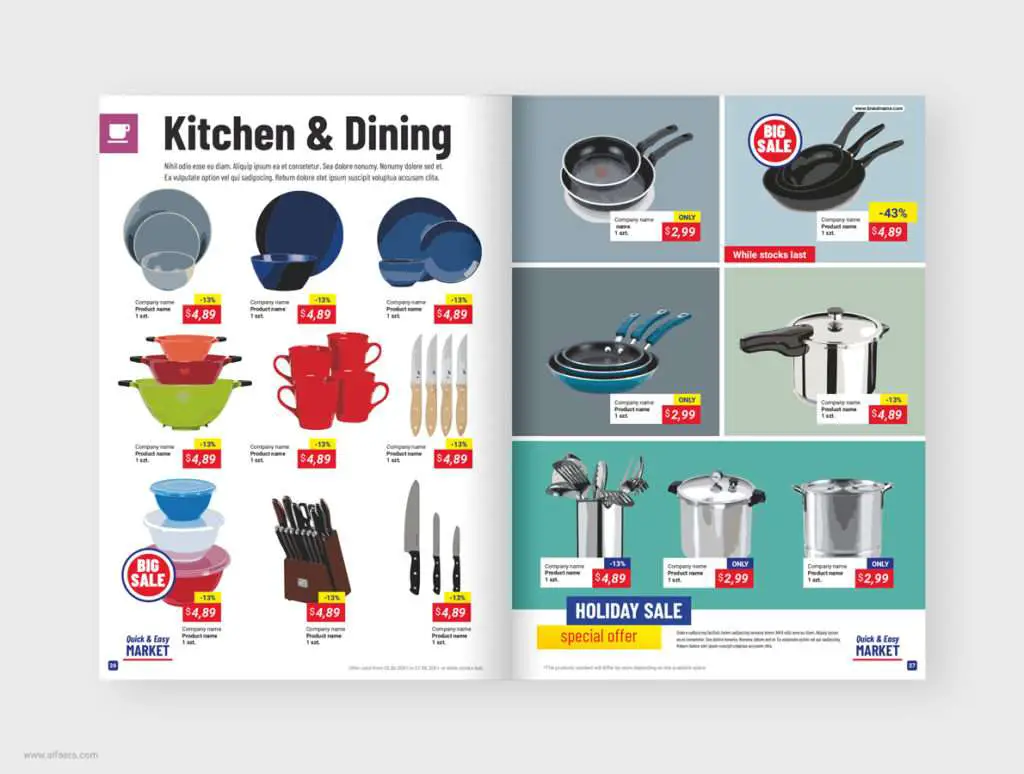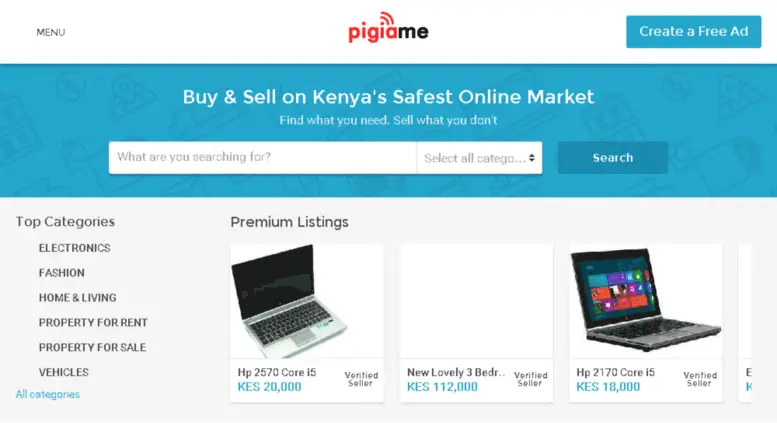Are you looking to tap into the thriving e-commerce market in Kenya? In this article, we will explore the various ways in which you can effectively use online marketplaces to sell your products. Whether you are a small business owner or an aspiring entrepreneur, online marketplaces provide a convenient platform to reach a wider audience and boost your sales. From the popular Jumia and Kilimall to niche platforms like Pigiame and Masoko, we will guide you through the steps of setting up your online store, optimizing your product listings, and maximizing your profits. Get ready to unlock the potential of online marketplaces and take your business to new heights in Kenya!

This image is property of creativekigen.com.
Choosing the right online marketplace
When it comes to selling products online in Kenya, choosing the right online marketplace is crucial. There are several popular online marketplaces in Kenya that you can consider, each with its own features and benefits. It’s important to conduct thorough research to understand the strengths and weaknesses of each marketplace before making a decision.
Researching popular online marketplaces in Kenya
Start by researching the various popular online marketplaces in Kenya. Look for platforms that have a strong presence in the market and are used by a significant number of customers. Some popular online marketplaces in Kenya include Jumia, Kilimall, and Masoko.
Take the time to read customer reviews and feedback for each marketplace to get an idea of the user experience and overall satisfaction. Additionally, consider factors such as the marketplace’s reach, visibility, and reputation in the industry.
Comparing features and benefits of different marketplaces
After identifying the popular online marketplaces in Kenya, compare their features and benefits. Look for key features such as ease of use, customizable storefronts, payment and delivery options, and marketing tools. Consider which features align with your goals and requirements as a seller.
Also, pay attention to the marketplace’s policies regarding fees, commissions, and seller support. Some marketplaces may offer better terms for certain types of products or categories, so it’s crucial to assess how these policies may impact your business.
Assessing the target audience and product compatibility
Another important consideration when choosing an online marketplace in Kenya is assessing the target audience and product compatibility. Each marketplace may have a slightly different customer base, and it’s important to ensure that your products align with the needs and preferences of the audience on that specific marketplace.
Consider factors such as the demographics, buying habits, and interests of the customers on each marketplace. Evaluate whether your products cater to their needs and if there is demand for them. By understanding the target audience of each marketplace, you can make an informed decision about which platforms will best showcase and sell your products.
Understanding the selling process
Once you have chosen the right online marketplace for your business, it’s important to understand the selling process and familiarize yourself with the platform’s guidelines and requirements.
Registering and creating seller accounts on online marketplaces
The first step towards selling products on an online marketplace is to register and create a seller account. Most online marketplaces in Kenya have a simple registration process that requires basic information about your business.
After registration, you will need to provide additional details such as bank account information for payments and tax purposes. It’s important to ensure that all the information provided is accurate and up to date.
Fulfilling requirements and complying with marketplace guidelines
Each online marketplace may have specific requirements and guidelines that sellers must adhere to. These guidelines often cover aspects such as product quality, packaging, shipping, and customer service. It’s important to thoroughly read and understand these guidelines to ensure compliance.
By complying with the marketplace guidelines, you can ensure a positive selling experience for both you and your customers. Failure to meet these requirements may result in penalties, restrictions, or even account suspension.
Setting up payment and delivery options
Once you have created your seller account and familiarized yourself with the marketplace guidelines, you can proceed to set up payment and delivery options. Most online marketplaces offer a variety of payment methods for customers, such as mobile money, bank transfers, and cash on delivery.
It’s important to choose payment options that are popular and widely accepted in Kenya to cater to the preferences of your target audience. Additionally, consider the delivery options available on the marketplace and decide whether you will handle the shipping yourself or utilize third-party logistics providers.

This image is property of creativekigen.com.
Optimizing product listings
Creating compelling and attractive product listings is essential to attract potential customers and drive sales. There are several key factors to consider when optimizing your product listings.
Writing compelling product descriptions
When creating product descriptions, focus on highlighting the key features and benefits of your products. Use clear and concise language to communicate what makes your products unique and why customers should choose them. Include relevant keywords in your descriptions to improve search visibility.
Remember to address potential customer concerns or questions through your descriptions. Be transparent about product specifications, materials used, and any warranties or guarantees offered. By providing comprehensive and compelling product descriptions, you can help customers make informed purchasing decisions.
Taking appealing product photos
High-quality product photos can significantly impact the perceived value and desirability of your products. Invest in good lighting and a decent camera to capture clear and attractive images. Show different angles and close-up shots to provide a comprehensive view of the product.
Consider using props or lifestyle shots to demonstrate the usage or context of the product. Additionally, optimize the image size and format for quick loading and compatibility across different devices.
Setting appropriate pricing strategies
Pricing plays a crucial role in attracting customers and ensuring profitability. Research the market and competitors to get an idea of the average prices for similar products. Consider factors such as product quality, features, and brand reputation when setting your prices.
It’s important to strike a balance between being competitive and ensuring profitability. Avoid setting prices too low, as it may raise questions about the quality of your products. On the other hand, setting prices too high may deter customers. Regularly review and adjust your pricing strategies based on market trends and feedback from customers.
Utilizing keyword optimization techniques
Keyword optimization is essential to improve the visibility of your products in online marketplaces’ search results. Identify relevant keywords that customers are likely to use when searching for products in your category.
Incorporate these keywords in your product titles, descriptions, and tags. However, avoid keyword stuffing, as it may negatively impact your search rankings. Instead, focus on using keywords naturally within your content to improve its relevance.
Providing accurate product attributes and details
Accurate and detailed product attributes help customers make informed purchasing decisions. Provide information such as product dimensions, weight, materials used, and any additional features or accessories.
Consider including a sizing guide if applicable, along with clear instructions on how to use or assemble the product. The more precise and accurate your product information is, the more likely customers will trust your brand and make a purchase.
Managing inventory and stock levels
Efficient inventory management is crucial to ensure that you have enough stock to meet customer demand while minimizing storage costs and waste. Consider the following practices to manage inventory effectively.
Keeping track of available stock
Regularly monitor and keep track of your available stock. Implement an inventory tracking system that allows you to easily check the quantities of each product. This will help you avoid stockouts and ensure timely replenishment.
Implementing inventory management systems
Consider using inventory management software or tools to streamline the monitoring and management of your inventory. These systems can help automate processes such as order tracking, stock counting, and forecasting to ensure efficient inventory management.
Look for software that integrates with the online marketplace you are using to facilitate seamless synchronization of inventory data and order processing.
Monitoring stock levels and replenishment
Monitor your stock levels closely to avoid stockouts or excess inventory. Analyze sales trends and forecasts to identify the optimal stock levels for each product. Keep track of the lead time for restocking and plan your replenishment accordingly.
Optimizing stock levels can ensure that you have enough inventory to fulfill customer orders promptly while minimizing carrying costs and the risk of deadstock.

This image is property of tdsmarketers.com.
Building a reputable seller profile
Establishing a reputable seller profile is essential to build trust and credibility with customers. A strong seller profile can enhance your brand image and attract more customers. Consider the following strategies to build a reputable seller profile.
Maintaining positive customer feedback and ratings
Encourage customers to leave feedback and ratings for your products and service. Provide excellent customer service and respond to inquiries or complaints promptly and courteously. Address any issues or concerns raised by customers professionally and take necessary actions to resolve them.
Positive feedback and ratings can significantly impact the trustworthiness of your seller profile and attract more potential customers.
Handling customer inquiries and complaints promptly
Promptly responding to customer inquiries and complaints is essential for maintaining a positive seller profile. Be proactive in addressing customer concerns and questions. Aim to exceed customer expectations by providing helpful and detailed responses.
If a customer has a complaint, listen attentively, apologize if necessary, and take prompt action to resolve the issue. By demonstrating your commitment to customer satisfaction, you can build a strong reputation as a reliable seller.
Establishing a strong brand presence
Having a strong brand presence is crucial to standing out in a competitive online marketplace. Develop a unique brand identity that sets you apart from your competitors. Consider aspects such as your brand name, logo, website design, and packaging.
Maintain consistency across all touchpoints, including your product listings, social media platforms, and customer communication. By establishing a strong brand presence, you can increase brand recognition and customer loyalty.
Promoting and advertising products
To maximize sales and reach a wider audience, it’s important to promote and advertise your products effectively. Here are some strategies to consider.
Utilizing online marketplace advertising tools
Most online marketplaces offer advertising tools to help sellers promote their products. Consider utilizing these tools to increase your product visibility within the marketplace. Set a budget and objectives for your advertising campaigns, and regularly monitor their performance to make necessary adjustments.
Experiment with different ad formats such as sponsored product listings, banner ads, or featured placements to reach your target audience effectively.
Implementing targeted marketing strategies
In addition to online marketplace advertising tools, implement targeted marketing strategies to reach a broader audience. Leverage social media platforms and email marketing to engage with potential customers and drive traffic to your online marketplace listings.
Consider collaborating with influencers or bloggers who cater to your target audience. Offering them free products or commissions for driving sales can help increase your brand exposure and generate leads.
Leveraging social media platforms for product promotion
Social media platforms provide excellent opportunities to showcase your products and interact with customers. Create engaging and shareable content that highlights the features and benefits of your products. Utilize appealing visuals, videos, and user-generated content to captivate your audience.
Leverage features such as hashtags, stories, and live videos to engage with your followers and build a community around your brand. Respond to comments and direct messages promptly to show that you value customer interaction.

This image is property of creativekigen.com.
Offering competitive pricing and deals
To attract customers and stand out from the competition, offering competitive pricing and attractive deals is essential. Consider the following strategies.
Researching competitor pricing
Regularly monitor and analyze the pricing strategies of your competitors. Identify their pricing patterns, discounts, and promotional offers. Compare your prices with theirs and adjust your prices accordingly to remain competitive.
Remember that pricing is not solely about undercutting your competitors. It’s about providing value to customers while ensuring profitability for your business.
Implementing competitive pricing strategies
Develop a pricing strategy that aligns with your business goals and target audience. Consider factors such as product quality, brand perception, and market demand. Experiment with pricing strategies such as value-based pricing, bundle pricing, or promotional pricing.
Regularly evaluate the performance of your pricing strategies and make adjustments as needed to optimize sales and profitability.
Creating attractive deals and discounts to attract customers
Offering occasional deals, discounts, or limited-time promotions can help attract customers and create a sense of urgency. Consider running promotions during festive seasons, holidays, or other special occasions.
Craft attractive offers such as buy-one-get-one-free, percentage discounts, free shipping, or loyalty programs to incentivize customers to choose your products over competitors’. Be transparent about the terms and conditions of the deals to avoid any confusion or disappointment.
Ensuring secure payment transactions
One of the primary concerns for both sellers and customers when it comes to online marketplaces is the security of payment transactions. Taking necessary measures to ensure secure payment transactions is crucial for building trust with customers.
Integrating secure payment gateways
Choose reputable and secure payment gateways to process customer payments. Many online marketplaces offer integrated payment gateways that are trusted and widely used. Ensure that the payment gateway you choose supports popular payment methods in Kenya and provides robust security measures.
Implementing secure payment gateways helps protect sensitive customer information, such as credit card details, and ensures smooth and secure transactions.
Educating customers about secure payment methods
Provide clear and concise information to customers about the secure payment methods available on the online marketplace. Highlight the security measures in place, such as encryption and fraud detection, to assure customers that their transactions are safe.
Regularly update customers on any changes or enhancements to the payment process to keep them informed and build confidence in your online marketplace.
Implementing fraud detection measures
Implement fraud detection measures to mitigate the risk of fraudulent transactions. Monitor transaction patterns and look out for any suspicious activities. Utilize fraud protection services or tools that can help identify and prevent fraudulent orders.
Regularly review and update your fraud detection measures to stay ahead of emerging threats and protect both your business and customers.

This image is property of truehost-coke.b-cdn.net.
Providing excellent customer service
Delivering excellent customer service is key to fostering customer loyalty and positive word-of-mouth. Consider the following practices to provide a top-notch customer experience.
Responding to customer inquiries promptly
Promptly respond to customer inquiries and questions. Aim to provide informative and helpful responses within a reasonable timeframe. Set clear expectations for response times and ensure that you have sufficient resources to handle customer inquiries efficiently.
Consider automating some aspects of customer service, such as frequently asked questions or order status updates, to provide instant responses and free up time for more personalized interactions.
Resolving customer complaints efficiently
Handle customer complaints or issues promptly and professionally. Listen to customers’ concerns, empathize with their frustrations, and take responsibility for any mistakes or shortcomings. Resolve the issues to the best of your ability and communicate the solution clearly to the customer.
Implement a proper escalation process to handle complex or unresolved cases. By addressing customer complaints efficiently, you can turn a negative experience into an opportunity to build trust and loyalty.
Offering flexible return and refund policies
Establish clear and transparent return and refund policies. Make it easy for customers to return or exchange products if they are not satisfied. Ensure that the process is hassle-free and well-communicated to avoid customer frustration.
Offering flexible return and refund policies demonstrates your commitment to customer satisfaction and builds confidence in your products and brand.
Analyzing data and optimizing sales
Make data-driven decisions to optimize your sales performance and improve your overall business strategy.
Tracking sales performance and key metrics
Regularly track and analyze your sales performance to identify trends, patterns, and areas for improvement. Keep an eye on key metrics such as revenue, conversion rates, customer acquisition costs, and average order value.
Identify top-selling products, categories, or customer segments. Use this data to adjust your marketing and sales strategies to maximize your revenue and profitability.
Analyzing customer behavior and preferences
Understanding customer behavior and preferences is crucial for tailoring your product offerings and marketing initiatives. Analyze customer data such as browsing behavior, purchase history, and feedback to identify trends and insights.
Leverage these insights to improve your product assortment, target marketing campaigns, and personalize customer experiences. By offering products and experiences that resonate with your target audience, you can increase customer satisfaction and loyalty.
Making data-driven decisions to optimize sales
Use the data and insights gathered from your sales and customer analysis to make informed business decisions. Experiment with different strategies, such as product bundling, cross-selling, or targeted promotions, and measure their impact on sales performance.
Continually evaluate and refine your strategies based on data and customer feedback. By making data-driven decisions, you can drive continuous improvement and optimize your sales to achieve long-term success.
In conclusion, selling products online in Kenya can be a rewarding venture when approached strategically. By choosing the right online marketplace, understanding the selling process, optimizing product listings, managing inventory effectively, building a reputable seller profile, promoting products, offering competitive pricing, ensuring secure payment transactions, providing excellent customer service, and analyzing data to optimize sales, you can establish a successful online business and reach a wider audience. Remember to continuously monitor market trends, customer preferences, and competitors to stay ahead of the game and adapt your strategies accordingly.




